#bonnethead shark
Explore tagged Tumblr posts
Text
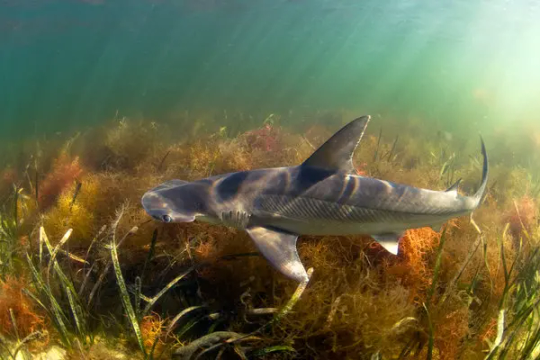
Contrary to popular belief, not all sharks are carnivorous. The bonnethead shark (a member of the hammerhead sharks) was recently discovered to be omnivorous, including seagrass in their diet.
#fish facts#marine animals#marine biology#shark#shark facts#sharks#fish#sharkblr#fun facts#bonnethead shark
4K notes
·
View notes
Text

Finished cardboard bonnethead shark
1K notes
·
View notes
Text
Shark userboxes! (Full pack)










Sorry if I used a wrong image for one of the sharks!
#graphics#web graphics#userbox#ask answered#shark#i love sharks#whale shark#great white shark#fishblr#fish#aquatic#oceancore#ocean#sea#rentry graphics#rentry resources#basking shark#nurse shark#bonnethead shark#black tip reef shark#sand tiger shark#carpet shark#lemon shark#sharkcore#full pack
439 notes
·
View notes
Note
do you know any really cool things about hammerhead or bonnet head sharks? they’re some of my favorites. thanks!

Bonnethead Shark or Sphyrna tiburo
My favorite fact about these sharks is that THEY'RE OMNIVORES! This is the first shark that is an active hunter that has been found to consume plants! (Filter feeders like whale sharks also eat plant matter because filter feeding isn't a selective process) Up to 60% of this shark's diet is sea grass!

There are about 10 recognized species of hammerhead sharks (Sphyrnidae family) and the bonnethead shark is the smallest, they grow up to 1.2 m (4 ft). They're also known as shovelhead sharks because of their unique head shape!
#marine biology#marine ecology#science#animals#biology#animal facts#wildlife#marine life#ocean#fun facts#shark#sharks#hammerhead#hammerhead shark#hammer head shark#bonnethead shark#bonnet head shark#sharkweek#shark week#zoology#cool facts
578 notes
·
View notes
Text
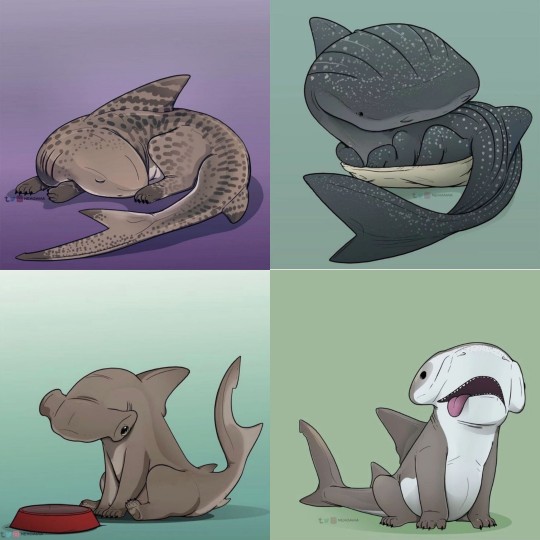
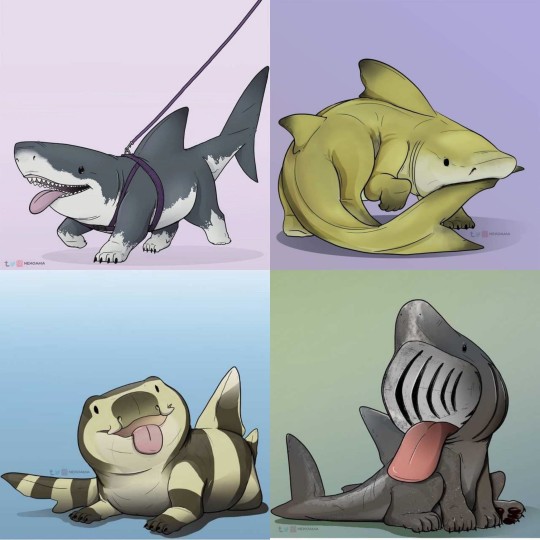
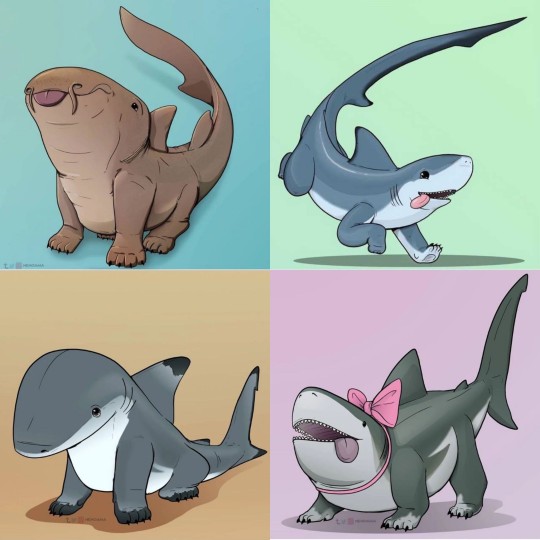
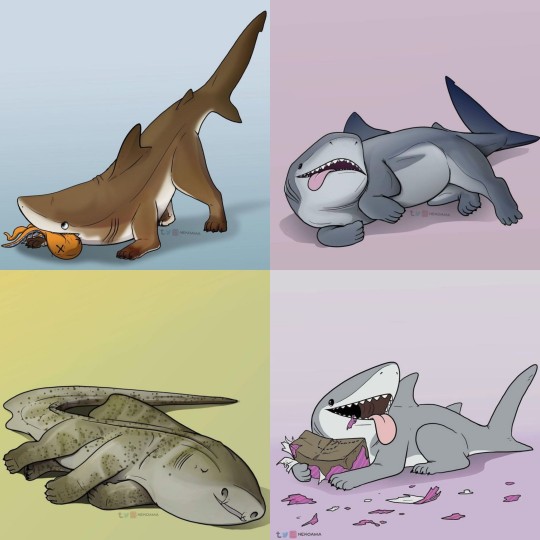

Found on Pinterest 😍😍 had to share!!
🎨: The Art of Ama @nekoama
#shark puppies#shark art#shark illustrations#tiger shark#whale shark#hammerhead shark#bonnethead shark#great white shark#lemon shark#bamboo shark#basking shark#nurse shark#thresher shark#blacktip shark#zebra shark#frilled shark#oceanic whitetip shark#greenland sharks#blue shark#shark blog#sharks#advocacy for sharks#respect the locals#shark post#pinterest#Pinterest art#Pinterest shark
1K notes
·
View notes
Text
Uncharismatic Fact of the Day
Can you guess where the shovelhead shark got its name? It's because its head-- wait for it-- looks like a shovel! This is particularly true of males, which have a distinctive bulge in the center of their foreheads, creating the very distinct impression of a spade, while females have a much flatter head. This distinguishing feature also gives the bonnethead shark the unique position of being the only shark species that exhibits sexual dimorphism through the shape of the head.

(Image: A male bonnethead shark (Sphyrna tiburo) by Gerard Soury
#bonnethead shark#Carcharhiniformes#Sphyrnidae#hammerhead shark#requiem sharks#sharks#cartilaginous fish#fish#uncharismatic facts
182 notes
·
View notes
Text
Eyeauh
2K notes
·
View notes
Text
Todays shark is...
The Bonnethead Shark!

Fun Fact: They use the electroreception organs on their hammer head to find animals hiding under the sediment!
#shark a day#shark#marine life#bonnethead shark#HAPPY NEW YEAR!!!!!!#i want to wish everyone the best for 2025 !!
93 notes
·
View notes
Note
I have to know:
If you could would you ever keep a shark as a pet (if it was 100% healthy for the shark and like ethical and shit) and if so is there a specific kind of shark?
off the top of my head i'll say bonnethead shark, they just look so extremely silly

125 notes
·
View notes
Text


Hammerhead sketchbook pages | x
#artists on tumblr#art#digital art#nature#sketch#sketchbook#sketches#hammerhead shark#hammerheads#sharks#ocean life#wildlife#marine life#drawing#artwork#bonnethead shark#great hammerhead#scalloped hammerhead
56 notes
·
View notes
Text
Fish of the Day
Today's fish of the day is the bonnethead shark!

The bonnethead shark, also called bonnet shark, or shovelhead, scientific name Sphyrna tiburo, is known for its unique head shape. It is often thought that the bonnethead shark is a young hammerhead shark, and despite belonging to the same family, Sphyrnidae, they are not the same species. Unlike the hammerheads worldwide range, the bonnethead shark's natural range only stretches from Southern Canada down to The coast of Brazil and Peru, with populations on both coasts of the Americas. It lives primarily in estuaries or bays, living around vegetation, sandy bottomed areas, or reefs. These are a migratory species: during the summer they move inshore and further North, but during Winter they move back south. Eastern populations concentrate around the Carolinas in Summer, and the Florida coast or Caribbean sea during the other months, but there are no concentrated points known for Pacific populations.

Bonnethead sharks, similar to other sharks of their size, eat primarily crustaceans. Crabs, shrimp, mollusks, and small fish. Similar to hammerhead sharks, they have many electromagnetic sensors on the underside of the head, this is the reason for the spade shape as the spacing of the sensors allows them to better find prey below them. They hunt along the sea bed, moving the head similar to how one moves a metal detector, looking for electromagnetic irregularities produced by living beings. After detection, the shark turns sharply and bites into the sediment, then grinding prey and swallowing. When unable to find prey, or in larger groups they also have been found eating seagrass. Other than for detection of prey, this head can also be used for better vision: as the eyes are faced to the sides this gives them a much wider field of view, allowing them to see if any predators are around, something that gives them a higher chance of surviving past childhood.

The reproduction of the bonnethead shark is viviparous, meaning that the baby is formed inside the mother and born alive. breeding is thought to take place around spring and autumn in the Atlantic populations, but may take place year round without a proper season for it. However, these fish will breed only after they've reached 31 inches in females, and 24 inches in males at around their second year of life. Then, after breeding, gestation takes only 5 months before they have anywhere between 4-12 pups, who are already 12 inches in length. These pups are then abandoned, primarily to keep the parents from feeding on their own offspring, and will live in and around seagrass beds they were born in. This is where they can hide from predators for the first few years. The largest bonnethead shark reported was 4 feet in length, but most are only 2.5-3 feet long. Male and female bonnetheads can be told apart by the sexual dimorphic morophology of the head shape. In females, the head is rounded, but males have a bulge shape around the midline of the head, referred to as a cephalofoil.

Their behavior is unlike many sharks, as bonnetheads are known to exist in groups. Living in smaller numbers of 5-15 in a pod, although there have been schools of thousands reported to be traveling with one another. These groups are not territorial, but they have a hierarchy within them. Strangest of all, these sharks appear to communicate with one another using cerebrospinal fluid as a chemical communicator between individual sharks, letting the others know where they are at any given time.

That's the bonnethead shark, everybody! Have a wonderful day.
#fish#fish of the day#fishblr#fishposting#aquatic biology#marine biology#freshwater#freshwater fish#animal facts#animal#animals#fishes#informative#education#aquatic#aquatic life#nature#river#ocean#shark#sharks#bonnethead#bonnethead shark#bonnet shark#shovel shark#shovelhead shark#hammerhead shark
131 notes
·
View notes
Text

A new species of hammerhead shark related to the bonnethead shark has been discovered!
Sphyrna alleni (also known by its common name 'shovelbill shark') has been confirmed to live in the Caribbean and Southwestern Atlantic.
(The image above is taken from the published paper on this discovery: Gonzales, C. et al. (2024), 'Sphyrna alleni sp. nov., a new hammerhead shark (Carcharhiniformes, Sphyrnidae) from the Caribbean and the Southwest Atlantic.' Zootaxa, 5512(4), 491-511. DOI: 10.11646/zootaxa.5512.4.2)
#marine biology#marine animals#shark#sharks#fish facts#sharkblr#fish#shark facts#fun facts#science#shovelbill shark#bonnethead shark#hammerhead#science news
88 notes
·
View notes
Text
Daily fish fact #797
Bonnethead shark!

Their shovel-shaped cephalofoil (or hammer) is a distinguishing feature among hammerhead sharks, and sharks overall. They use cerebrospinal fluid in chemical communication, letting other bonnetheads know they are in the area!
#fish#fish facts#fishfact#fishblr#biology#zoology#sharks#shark#marine biology#marine life#marine animals#sea creatures#sea animals#sea life#hammerhead#hammerhead shark#bonnethead shark
79 notes
·
View notes
Text
Since y'all liked my previous shark post, here's the only plant-eating shark!
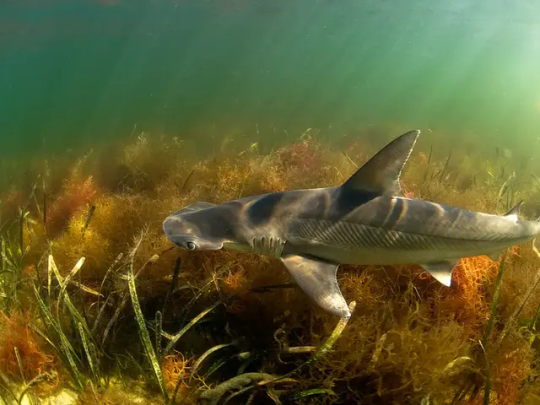
Bonnethead shark!
236 notes
·
View notes
Text

Day 7: Genderfluid Bonnethead Shark
ID in alt Click for higher quality
Feel free to use with credit
#b33viemm art#pride month#pride month art#pride month2 024#pride art#pride#pride flag#pride flag art#genderfluid#genderfluidity#genderfluid flag#genderfluid pride#genderfluid pride flag#genderfluid art#sharks#bonnethead shark#bonnethead sharks#lgbtq#lgbtqia#lgbtq art#queer art
64 notes
·
View notes
Text
🦈 Daily Shark Fact: 🦈
Bonnethead Sharks, also known as the Shovelhead shark, is a species of tropical shark, and is the smallest member of the hammerhead genus. Bonnetheads are the only shark species known to be omnivorous. They consume both animal and plant matters. Their diet is usually dominated by marine crustaceans, mostly blue crabs. They also eat mollusks, shrimp, and different species of small fishes. Seagrasses have also been found in their stomachs.
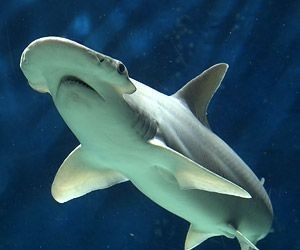
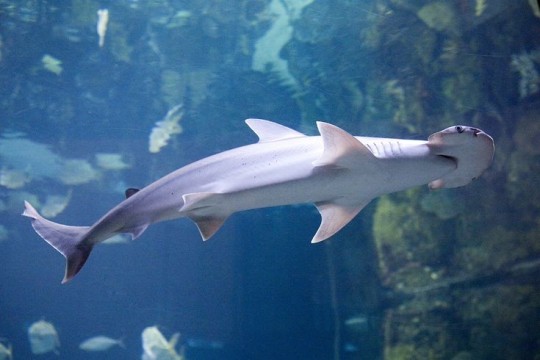
#bonnethead shark#hammerhead#small shark#tiny shark#advocacy for sharks#respect the locals#save the sharks#shark#shark awareness#shark blog#cartilaginous fish#elasmobranch#shark lover#sharks#just a girl who loves sharks#fyp#sharks of tumblr#shark tumblr#shark post#sharks dont infest oceans#shark facts#daily shark facts#facts about sharks
395 notes
·
View notes